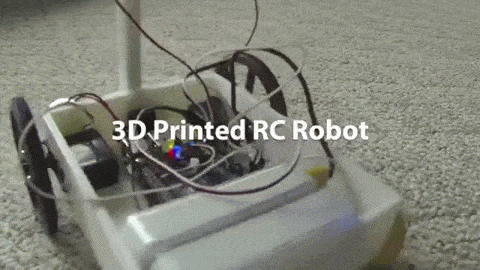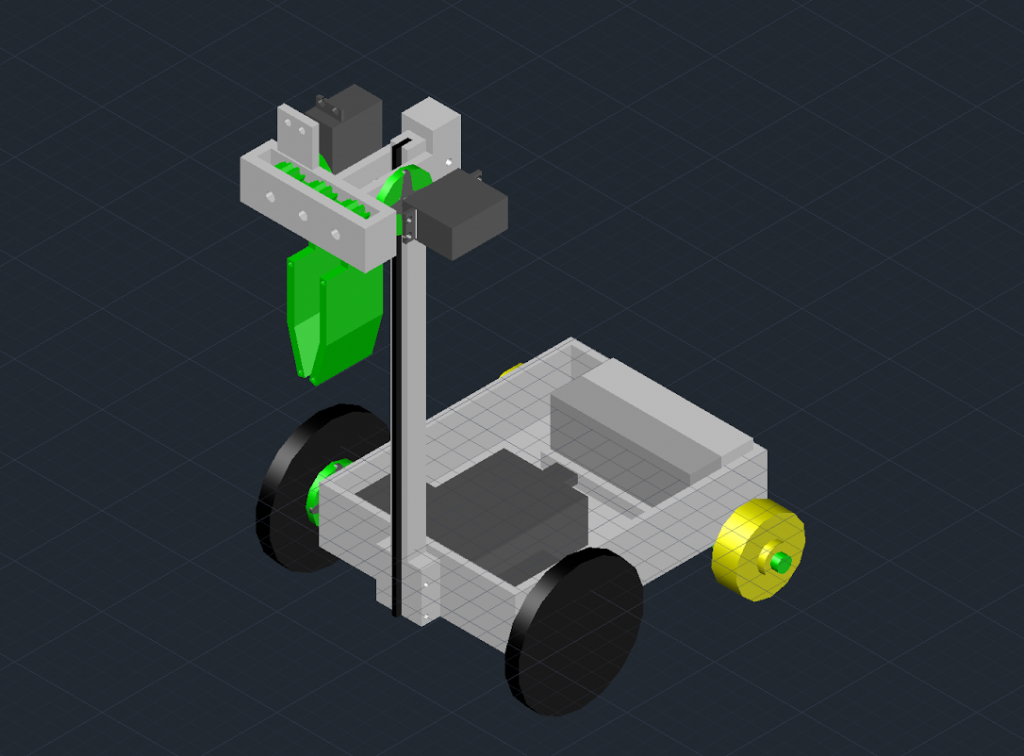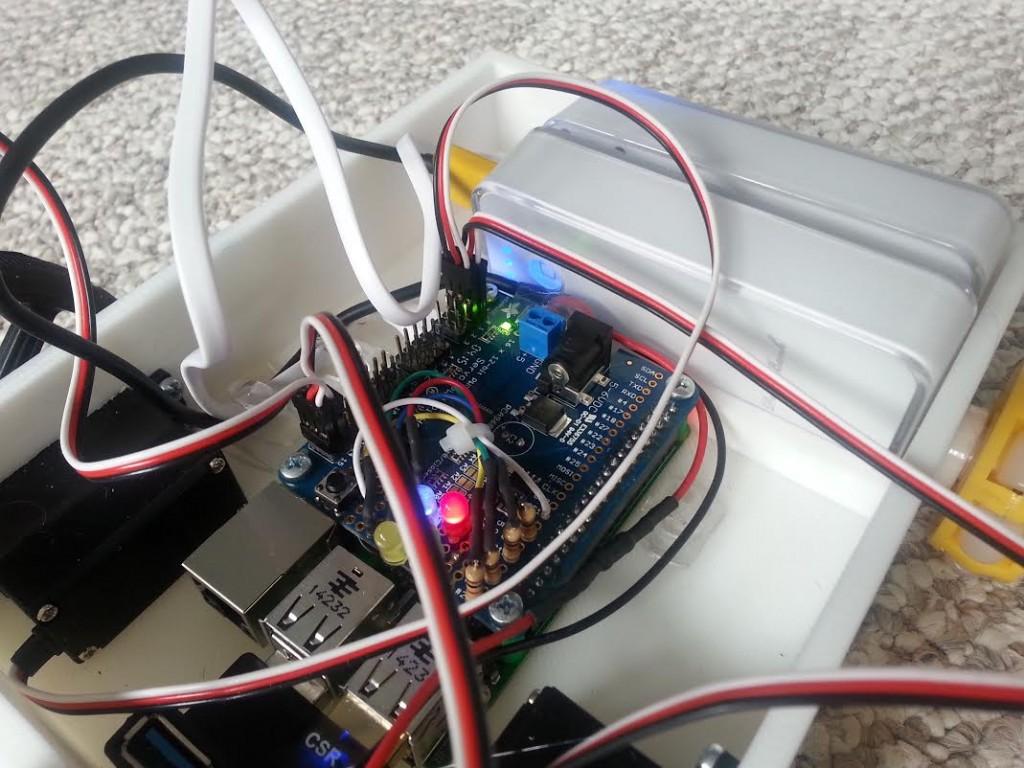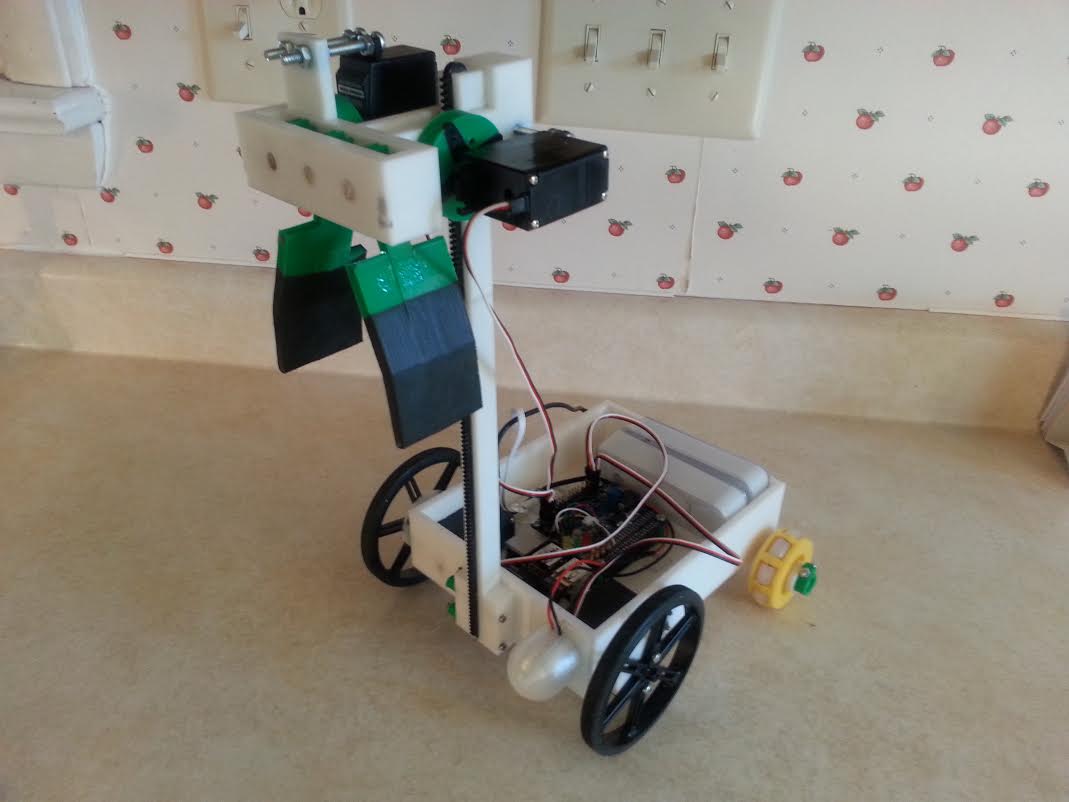 Over the past year or so, we have covered stories involving the 3D printing of dozens of different robots. Robotics and 3D printing seem to go together like peanut butter and jelly. Both technologies are great on their own, but when combined together, become extraordinary.
Over the past year or so, we have covered stories involving the 3D printing of dozens of different robots. Robotics and 3D printing seem to go together like peanut butter and jelly. Both technologies are great on their own, but when combined together, become extraordinary.
 We have seen scientists and engineers from around the globe come up with unique ideas for 3D printed robots, some of which have brought a new functionality to the space, and others which are just fun to play with. With all of this said, this latest 3D printed robot might just take the cake. It was created not by an experienced engineer, or even a college engineering student. It was designed and 3D printed by a 15-year-old student named Casey Johnson.
We have seen scientists and engineers from around the globe come up with unique ideas for 3D printed robots, some of which have brought a new functionality to the space, and others which are just fun to play with. With all of this said, this latest 3D printed robot might just take the cake. It was created not by an experienced engineer, or even a college engineering student. It was designed and 3D printed by a 15-year-old student named Casey Johnson.
Johnson considers himself to be a “tinkerer, hobbyist and zealous Lego builder.” In fact, last summer, he launched a successful Kickstarter campaign for a product he called “MiniZip.” Basically it provides Lego sets with a compact and cheap power source.
“It lets you power the LEGO Power Functions motors and lights from a 9v battery rather than a large and bulky LEGO brand battery pack,” Johnson tells 3DPrint.com. “The project was successful and raised over $4800 – far exceeding my goal of $500. I hand-made and soldered over 400 cables and shipped them out to my backers.”

Casey Johnson’s CAD design
With the profits left over after everything was said and done, Johnson didn’t do what most kids would do, and go out and buy the latest video game system or basketball shoes. Instead he purchased a RoBo 3D printer, something he had wanted to do for quite some time.
Last year Johnson assembled a robot built from Legos which was controlled by a Raspberry Pi, for a competition in the Science Olympiad. After the competition, he decided to disassemble the robot, but still kept the idea alive in his head. Then just recently, he decided to use his 3D printer in order to create a more finished version of that Lego robot, using 3D printed parts instead of Lego blocks.
“I designed the robot in CAD and then started printing the parts out,” Johnson tells us. “Everything fit well and only 2 or 3 minor parts had to be tweaked in CAD and reprinted. It features a RaspberryPi model b+ with a 16 channel PWM servo motor ‘Pi hat’ from Adafruit. It is powered by two rechargeable battery packs designed for charging cellphones, one for powering the Pi and one for powering the motors.”
Johnson did run into a small problem though. The batteries he used had an auto sleep feature built into them, meaning that they would turn off when the phone was fully charged (or in this case, the motors). He managed to work around  this issue by taking apart a small LED flashlight and then using the light array as a headlight on the robot. The draw of the light on the battery kept it active, and at same time not being large enough to drain the power.
this issue by taking apart a small LED flashlight and then using the light array as a headlight on the robot. The draw of the light on the battery kept it active, and at same time not being large enough to drain the power.
The robot is programmed in Python, and Johnson used Adafruit’s tutorial in order to get all of the needed libraries downloaded into his Raspberry Pi. As for what the robot can do and how it is operated, it really is quite fascinating. It is controlled by a Playstation 3 controller, and has the ability to drive around, pick up objects, move them to a new location, and put them down.
“There is a gear rack that runs up the length of the front pillar that lets the claw climb up and down,” Johnson explains. “The claw is one of my favorite parts and was designed with integrated gears on the upper ends of the ‘fingers’ to simplify the design. The [PS3 controller’s] joysticks control the motors, and the buttons on the controller move the arm up and down and open and close the claw. There is an optional tilt-drive mode that is enabled by pressing the ‘select’ button. Tilting the controller to the front moves it forward, tilting to the left turns the robot left, etc.”
What Casey Johnson has done is truly amazing. He has raised funds in order to purchase a 3D printer, and then taken that printer and used it to create a very unique robot. Just a few years ago, this would have been impossible for an experienced engineer to accomplish, yet today, thanks to 3D printing and mini computers like Raspberry Pi, the potential is really unlimited. What do you think about Johnson’s 3D printed robot? Discuss in the 3D Printed robot forum thread on 3DPB.com. Check out the video of this robot in action below.
Subscribe to Our Email Newsletter
Stay up-to-date on all the latest news from the 3D printing industry and receive information and offers from third party vendors.
You May Also Like
3D Printing News Unpeeled: A $3000 SLS System, Construction Subsidies and Parameters
The Housing Affordability Crisis is one of Canadian President Trudeau’s biggest issues. Now the government has made subsidies available, including scaling new technologies, 3D printed housing and libraries of reapproved...
“Bundled Light” Enables High Quality Plastic 3D Printing from LEAM
Naturally, we expect current 3D printing methods to continuously improve, but it continues to do so in the most surprising ways. The latest development comes from LEAM, a startup spun...
Each to Their Own: Exploring Creality’s Latest Ender Trio as the Company Strengthens Its Commitment to 3D Printing Advocacy
Creality has reaffirmed its commitment to promoting 3D printing. The launch of the Ender-3 V3 SE, Ender-3 V3 KE, and Ender-3 V3 showcases the company’s dedication to catering to diverse...
3D Printing News Briefs, March 23, 2024: AM in the US Coast Guard, Navy, & More
In today’s 3D Printing News Briefs, we’re discussing the use of 3D printing in various branches of the military, including the U.S. Coast Guard, the U.S. Navy, and the German...
































